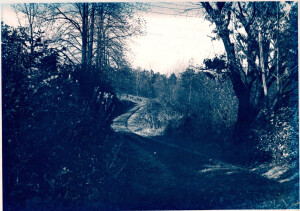 My earliest work experience could be written off as “a job for a man and a boy.” All it required was a pair of hands available at a moment’s notice. I followed my father and grandfathers everywhere. I probably was a nuisance, but they made me feel like my help was invaluable, necessary even. And they didn’t have to pay me a dime.
My earliest work experience could be written off as “a job for a man and a boy.” All it required was a pair of hands available at a moment’s notice. I followed my father and grandfathers everywhere. I probably was a nuisance, but they made me feel like my help was invaluable, necessary even. And they didn’t have to pay me a dime.
I held the ends of countless tape measures and string levels. I clamped down on boards and caught the drops as they made their cuts. They taught to respect a shovel and the man who could use it. “Don’t call it an idiot stick until you’ve worked with one for a day.” When I was big enough to hoist a post-hole digger, they let me try it. It looked like fun, but I never had the persistence needed to sink a hole three feet deep.
The most frequent job for a man and a boy has been described aptly as “moving obscure objects from place to place”. We had no end of obscure objects: scrap lumber, nails removed; odd chunks of wood too hard to compost, too soft to burn; rusting pieces of iron and steel accumulating slowly into a truck load worth hauling to the salvage yard; crushed rock and concrete rubble saved for fill and French drains.
It all got carried to a remote place in the yard that my mother said was a weed-choked eyesore. Today we might call it a wildflower garden. Like God’s Little Acre in Erskine Caldwell’s story, the site shifted around. One year it was remote, and the next year it was in the way. Everything had to be moved all over again.
Sometimes the obscure object – a truck trans-axle, say, or half a busted shed roof – was too heavy to move by a man and a boy or even by four men and a mule. Then it was time to look for the log chain and borrow a tractor. If it’s too heavy to lift, whatever it is, then drag it away.
And this leads to one of the most enduring lessons I learned as my father’s helper. If there is a smooth side carried effortlessly through the world, there usually is a rough side that can withstand whatever it takes to get the job done. Let the rough side drag.
Like an apocryphal quote attributed to Mark Twain, my father didn’t say it in that exact way, but it’s what he meant. He respected the labor of others and the materials they used. He was careful, not cavalier, with things he had to dismantle, replace and remove. Sometimes, though, dragging was the best option.
Over the last 50 years, I quoted my father so many times, I turned the saying into our family ethos. When you can’t wait for perfect conditions to line up like stars on an astrologer’s chart, let the rough side drag. When a boss is never satisfied with your work, keep on doing the best you can and let the rough side drag. When you are harder on yourself than anyone else ever could be, ease up and let the rough side drag.
Everyone’s ass drags in the universe sometimes, as Allen Ginsberg might say. Mine has. If my epitaph is ever carved in stone, you know what it should be. Let the Rough Side Drag.
From “Thinking Like a Carpenter”
About the Image: My grandparents’ ramshackle farm in the Hocking Hills had plenty of obscure objects waiting to be moved from place to place. My brother David took this black-and-white phot0 of the farm lane in the 1960s. He added the blue tint while experimenting during the developing process. The original black & white print is sharper, but the blue image is what I see when I journey to The Farm in my dreams.


![Sandhill cranes land on Platte River sandbar roosts west of Rowe Sanctuary’s Iain Nicolson Audubon Center southwest of Gibbon, Nebraska. [Photo by Lori Porter| Kearney Hub]](https://www.ghostturtles.com/wp-content/uploads/2015/03/sandhill_cranes_kearneyhub_032015-300x225.jpg)
![An endangered Whooping crane takes flight. Yhe large bird has a 7-foot wingspan. It is all white except for black wing tips and face markings. In this photo its long neck stretches forward; its wings sweep upward; and its black legs trail straight behind it. [Source: International Crane Foundation]](https://www.ghostturtles.com/wp-content/uploads/2023/03/Whooping-crane-eastern-ICF-080622-300x157.jpg)

![Mark Willis peruses a 1745 volume by Voltaire at a bouquiniste book stall on the banks of the Seine in Paris. He wears a brown leather jacket and checkered flat cap. He holds the open book in his hands. Rows of old books are seen on shelves behind him. [2005 photo by Ms. Modigliani]](https://www.ghostturtles.com/wp-content/uploads/2023/03/mw_bouquiniste_05-300x225.jpg)


